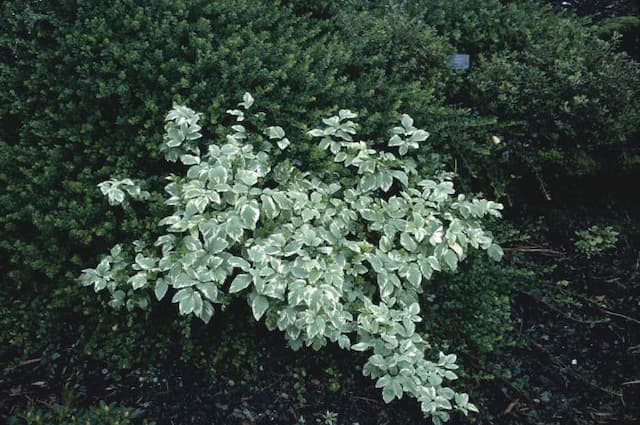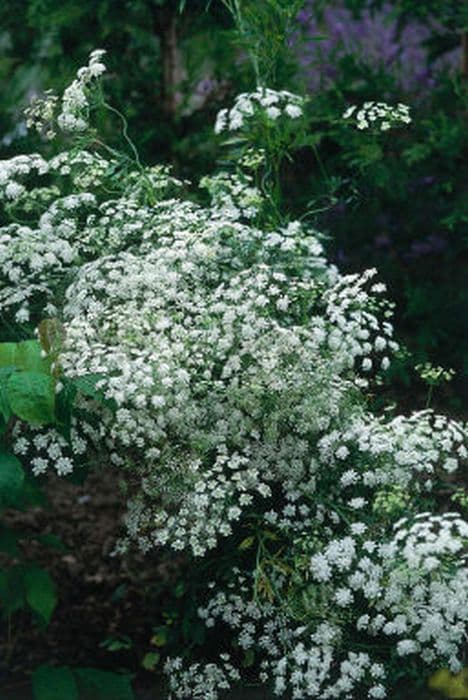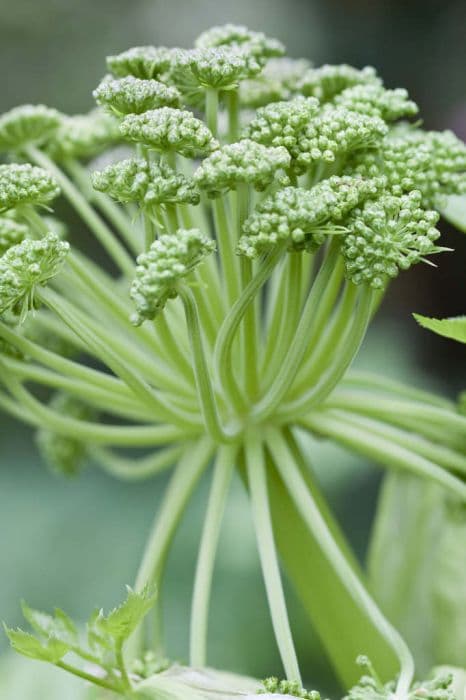Sea Holly Eryngium 'Pen Blue'

ABOUT
Eryngium 'Pen Blue', also known as Sea Holly, is a striking ornamental plant that is admired for its unique appearance and color. This perennial has a rosette of spiny, dark green leaves that are often tinged with a bluish hue. The foliage forms a textured and architectural base for the striking flowers. The blossoms themselves are quite distinctive. They are typically a vivid metallic blue or blue-violet color and are composed of small, tightly clustered flowers that form a cone-like shape. These flower heads are surrounded by spiky bracts, which add to the thistle-like appearance of the plant. Sea Holly flowers are borne on branching stems that rise above the foliage, creating an eye-catching display. The stems are stiff and straight, providing a strong structure for the inflorescences. The overall shape of the flowering stems and the texture of the bracts lend an almost artificial look to the plant, as if it were made of metal or plastic rather than flesh and sap. The blue coloration of both leaves and flowers is especially intense in full sunlight and can add a dramatic touch to garden settings. The combination of the spiny texture, the silver to blue-green foliage, and the stunning blue flowers makes Sea Holly a favorite for both traditional flower borders and modern, minimalist garden designs. Sea Holly is also known for its ability to attract pollinators such as bees and butterflies, adding to the liveliness of its presence in the garden. With its distinctive appearance and fascinating color, Eryngium 'Pen Blue' is a plant that truly stands out in any planting scheme.
About this plant
 Names
NamesFamily
Apiaceae
Synonyms
Sea Holly, Blue Hobbit Sea Holly, Blue Eryngo
Common names
Eryngium 'Pen Blue'
 Toxicity
ToxicityTo humans
The Sea Holly (Eryngium 'Pen Blue') is generally not considered toxic to humans. There is no significant evidence or reports suggesting that it poses a threat upon ingestion. Therefore, accidental consumption of this plant is not expected to cause poisoning or harmful symptoms in humans.
To pets
The Sea Holly (Eryngium 'Pen Blue') is also not known to be toxic to pets such as dogs and cats. It is not listed among plants that are commonly harmful to pets, and ingestion of this plant should not result in poisoning or severe health issues. However, as with any non-food plant, consumption may potentially cause mild stomach upset or intestinal discomfort due to the mechanical irritation from the plant's spiny leaves.
 Characteristics
CharacteristicsLife cycle
Perennials
Foliage type
Evergreen
Color of leaves
Green
Flower color
Blue
Height
2 feet (60 cm)
Spread
1 foot (30 cm)
Plant type
Herb
Hardiness zones
5
Native area
Europe
Benefits
 General Benefits
General Benefits- Attracts Pollinators: Eryngium 'Pen Blue', commonly known as Sea Holly, is known to attract bees and butterflies, which are vital for pollination.
- Drought Tolerance: Sea Holly is highly drought-tolerant, making it an excellent choice for water-wise gardens and arid environments.
- Low Maintenance: This plant typically requires minimal care once established, making it a good option for gardeners with limited time or expertise.
- Deer Resistance: Sea Holly is often avoided by deer, reducing the likelihood of damage in areas where deer browsing is a common issue.
- Unique Aesthetic: With its striking blue-to-silver spiny flower heads and textured foliage, Sea Holly provides unique visual interest in the landscape.
- Long Blooming Period: It has a long flowering season which extends through the summer, providing color and interest for a considerable period.
- Cut Flower: Sea Holly's distinctive flowers are long-lasting when cut and are sought after for floral arrangements and bouquets.
- Dried Flower: The blooms retain their form and color when dried, making them ideal for dried flower crafts and decorations.
- Versatile Garden Use: This plant is suitable for a variety of garden settings, including borders, rock gardens, and coastal gardens due to its tolerance of sandy soils.
- Soil Adaptability: Eryngium 'Pen Blue' is adaptable to a range of soil conditions, though it prefers well-drained soils.
 Medical Properties
Medical PropertiesThis plant is not used for medical purposes.
 Air-purifying Qualities
Air-purifying QualitiesThis plant is not specifically known for air purifying qualities.
 Other Uses
Other Uses- Eryngium 'Pen Blue', commonly known as Sea Holly, can be used as a natural dye due to its richly colored blossoms and bracts, providing hues of blue and violet.
- Sea Holly's stiff and intricate structure makes it an ideal candidate for crafting and jewelry-making, where its dried flowers can be incorporated into designs.
- The plant's root system can be used to prevent soil erosion in sandy or coastal environments, as it is quite resilient and can stabilize the soil.
- Sea Holly is used in floral arrangements to add a striking touch to bouquets and centerpieces due to its unique texture and form.
- Because of its architectural form, Sea Holly can be used in garden design to provide a focal point or to add interest to rock gardens and xeriscapes.
- As a dramatic silhouette in the winter garden, Sea Holly can be left unpruned to add structure and visual interest against snow-covered landscapes.
- Insect lovers use Sea Holly to attract beneficial insects, such as bees and butterflies, as it is a valuable nectar source especially adept at supporting pollinator biodiversity.
- The spiky foliage and flowers of Sea Holly can act as a deterrent against pests and animals, making them useful in protecting more vulnerable plants in a mixed border.
- Sea Holly can be incorporated into sensory gardens, not just for its visual appeal but also for the unique texture it offers, inviting tactile exploration.
- Educational purposes, such as teaching plant morphology and pollination strategies, can also be a use for Sea Holly, since it is an exemplary species to illustrate these concepts.
Interesting Facts
 Feng Shui
Feng ShuiThe Sea Holly is not used in Feng Shui practice.
 Zodiac Sign Compitability
Zodiac Sign CompitabilityThe Sea Holly is not used in astrology practice.
 Plant Symbolism
Plant Symbolism- Determination - Eryngium, commonly known as Sea Holly, often symbolizes a strong will and perseverance, reflecting the plant's ability to thrive in harsh conditions.
- Protection - The spiky texture of Sea Holly's bracts is thought to symbolize defense and protection, suggesting that it can ward off negativity or ill will.
- Independence - Due to its unique appearance and ability to stand alone in various landscapes, Sea Holly can represent independence and self-reliance.
- Attraction - With its striking blue hues and architectural form, Sea Holly can symbolize attraction or fascination, often used to indicate a strong and perhaps unconventional attraction.
 Water
WaterSea Holly prefers a moderate amount of water on a consistent basis, especially during its growing season in the spring and summer. Water the plant deeply every week, providing about one to two gallons depending on the size of the plant and the weather conditions. Be cautious of overwatering; Sea Holly does not like to sit in wet soil, so ensure that the soil drains well between watering sessions. During the winter, when the plant is dormant, reduce watering frequency to only when the soil is dry to the touch.
 Light
LightSea Holly thrives best in full sun conditions, where it can receive at least six hours of direct sunlight daily. The ideal spot for this plant is an area that provides unfiltered, direct light throughout the day. Avoid heavily shaded areas as this can impede its growth and flower production.
 Temperature
TemperatureSea Holly can withstand a variety of temperatures but performs best when the temperature ranges between 60 and 75 degrees Fahrenheit. It is a hardy plant that can survive minimum temperatures down to 5 degrees Fahrenheit, making it suitable for many temperate regions. Avoid exposing the plant to extreme heat above 85 degrees Fahrenheit for prolonged periods to prevent stress.
 Pruning
PruningPrune Sea Holly to remove spent flower stems and to shape the plant, typically after flowering in late summer or early fall. Pruning not only encourages new growth but also prevents the plant from self-seeding excessively. Prune the plant every year, cutting back to just above a set of healthy leaves, and remember to wear gloves to protect your hands from its spiny foliage.
 Cleaning
CleaningAs needed
 Soil
SoilSea holly thrives best in well-draining soil that is low in nutrients, with a preference for sandy or rocky soils. The ideal soil pH for Sea holly is between 5.5 and 7.5, and a mix that contains sharp sand or gravel can improve drainage. Avoid soils that are rich or retain moisture, as this can lead to root rot.
 Repotting
RepottingSea holly is a perennial that does not typically require frequent repotting. Repot every 2-3 years or when the plant shows signs of being root-bound. Careful handling is important as they do not like disturbance.
 Humidity & Misting
Humidity & MistingSea holly prefers low to moderate humidity conditions. It is tolerant of dry air and does not thrive in overly humid environments. For best growth, maintain ambient humidity without supplemental misting or humidity trays.
 Suitable locations
Suitable locationsIndoor
Provide full sun, well-drained soil, and infrequent water.
Outdoor
Plant in full sun, well-drained soil; water sparingly.
Hardiness zone
5-9 USDA
 Life cycle
Life cycleThe 'Pen Blue' Sea Holly (Eryngium 'Pen Blue') begins its life cycle as a seed, typically sown in early spring under cover or directly outdoors once the soil has warmed. Upon germination, seedlings emerge and develop into rosettes of spiny, dark green leaves. As the plant matures, it sends up flowering stems in its second growing season, showing off cone-shaped, steel-blue flower heads surrounded by spiky bracts, blooming from mid-summer to early fall. After pollination by insects attracted to its unique flowers, the plant sets seeds which can be collected if propagation is desired. Following its bloom period, Eryngium 'Pen Blue' may die back, especially if it is in a colder climate, as it can be short-lived or act as a biennial. However, in milder regions or with proper winter protection, it can survive as a perennial, potentially regrowing from the base the following spring.
 Propogation
PropogationPropogation time
Spring-Early Summer
Eryngium 'Pen Blue', commonly known as Sea Holly, is best propagated by seed. The optimal time to sow Sea Holly seeds is in late winter or early spring. To propagate, first, chill the seeds for a couple of weeks in the refrigerator to break dormancy, a process known as stratification. Afterward, seeds should be sown in well-draining soil, barely covering them, as they require light to germinate. The soil should be kept moist but not waterlogged. Germination can be erratic, so patience is needed. Once seedlings are large enough to handle, they should be transplanted to their final location, preferably in full sun and in soil that does not retain excess moisture.









